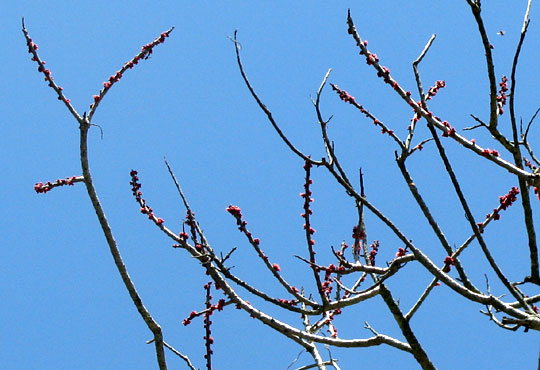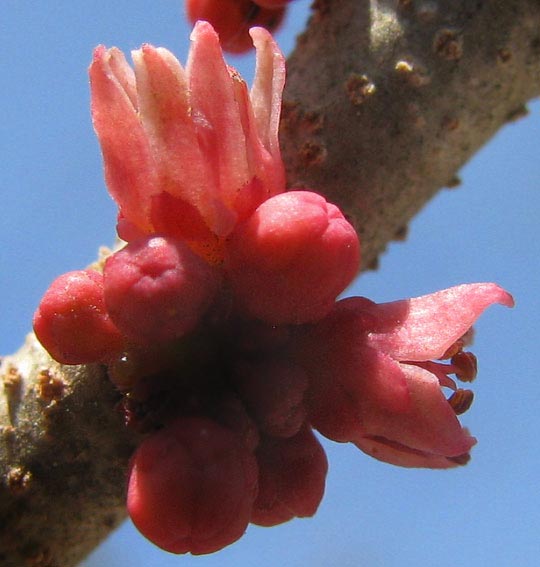Excerpts from Jim Conrad's
Naturalist Newsletter
from the March 21, 2010 Newsletter issued from Hacienda Chichen Resort beside Chichén Itzá Ruins, central Yucatán, MÉXICO; limestone bedrock, elevation ~39m (~128ft), ~N20.676°, ~W88.569°
RED MOMBIN FLOWERING
Another small tree flowering nowadays, also completely leafless because of the dry season, is the Red Mombin, SPONDIAS PURPUREA, a member of the Poison Ivy or Cashew Family, the Anacardiaceae. It's native from southern Mexico to northern Peru and Brazil and also widely planted in many tropical countries throughout the world. You can barely see the small flowers tightly clustered along treetop branches below:

The flowers' petals are only 3 mm long (1/10th inch), so these are tiny flowers. Other pictures I find of them on the Internet show the flowers in looser clusters. I suspect the reason these flowers' clusters are so tight and small is that it's early in the flowering period, plus the dry season is a limiting factor. A close-up of the flowers is below:

Red Mombin flowers are supposed to have a 5-lobed calyx, 5 petals and 10 stamens, but the top flower in the above picture appears to have eight or so petals. I don't know what's happening there, but it's true that often organisms that have been domesticated or under cultivation for a long time develop irregular features.
There's a Red Mombin and a Yellow Mombin. We met the Yellow Mombin, which we referred to then by another of its names, Spanish Plum, back in Querétaro. Yellow Mombins are Spondias mombin, so they're in the same genus as our Red Mombin, just a different species. You can review the Yellow Mombin page at www.backyardnature.net/q/spondias.htm.
Red Mombin, also called Hog Plum, Jocote, Purple Mombin and a host of other names, is called Ciruela by the locals here, which is the general Spanish name for the plum. Mombin fruits look and taste somewhat like northern plums, except that they have a larger seed different from a plum seed. Mombins and northern plums belong to entirely different families, so the similarities are based on other factors than relationship.